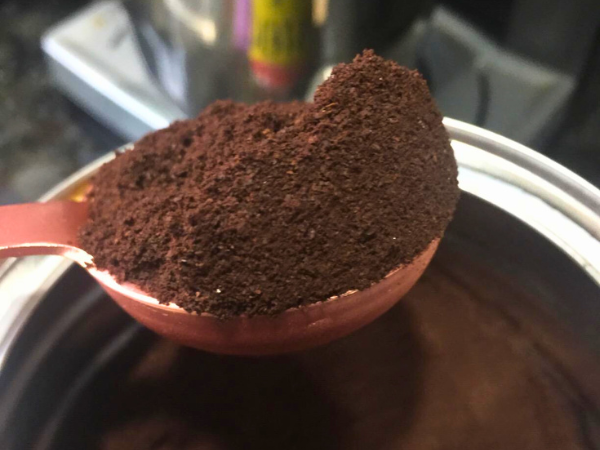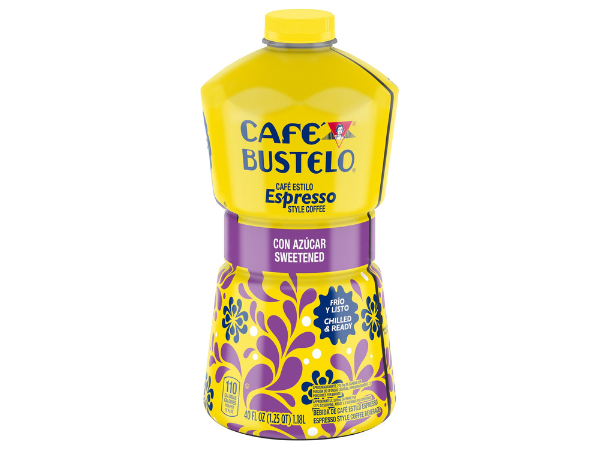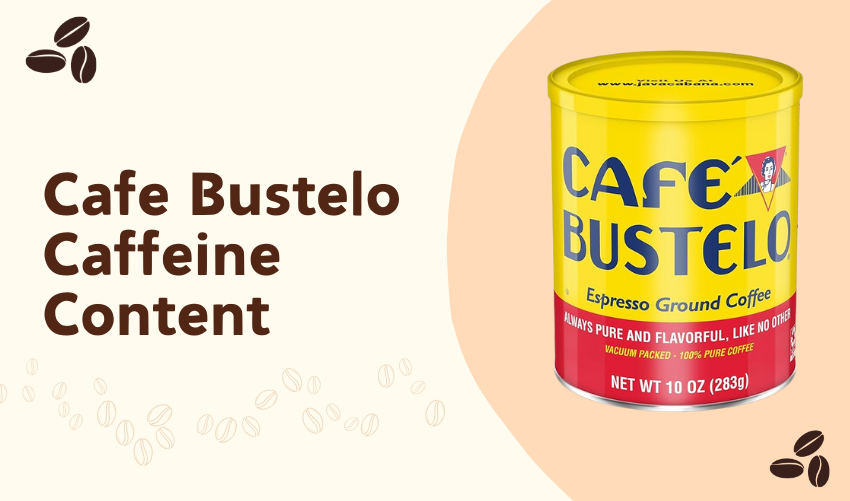Café Bustelo is a favorite for bold coffee lovers, known for its rich flavor and strong kick. But how much caffeine are you actually getting in each form?
In this guide, we’ll break down the caffeine content across Café Bustelo pods, ground coffee, and instant options—helping you choose the brew that best fits your routine.
Understanding Cafe Bustelo’s Caffeine Profile
This profile varies between its different formats: pods, ground coffee, and instant coffee. Each type has unique characteristics that influence its caffeine levels.
Why Cafe Bustelo Is Known For Its Kick
Cafe Bustelo is famous for delivering a powerful coffee experience. This reputation comes from several key factors:
- Dark Roast Intensity: The brand often uses a robust dark roast, maximizing caffeine extraction and flavor.
- Traditional Latin Blends: These blends are crafted to deliver a strong, bold coffee experience. This style is typical of espresso-style preparations.
- High Robusta Content: Many Cafe Bustelo products contain Robusta beans. These beans naturally have more caffeine than Arabica, which contributes to the coffee’s potency.
Each type offers a different way to enjoy the bold taste of Cafe Bustelo. The strong flavor and caffeine content make it a go-to choice for coffee enthusiasts.
Factors Influencing Caffeine Levels
Several factors influence the caffeine levels in Cafe Bustelo products. Understanding these can help you choose the right coffee for your needs:
- Brewing Method: Espresso shots are concentrated, providing more caffeine. Drip coffee, however, dilutes caffeine over a larger volume.
- Serving Size: More coffee means more caffeine. A larger cup or an extra spoonful increases caffeine intake.
- Coffee Type: Processing methods can slightly alter caffeine retention and concentration. Ground, instant, and pod forms all vary in caffeine content.
For example, ground coffee typically has the highest caffeine level due to its brewing potential. Pods offer convenience while still delivering a satisfying kick. Instant coffee, while easy to prepare, may have slightly lower caffeine levels.

Caffeine Content By Cafe Bustelo Product Type
Cafe Bustelo offers a wide range of coffee products. Each type has its own caffeine content. Understanding this can help you choose the right one for your needs.
Cafe Bustelo Instant Coffee Caffeine Content
Cafe Bustelo’s instant coffee is known for its quick and potent nature. It is designed for rapid preparation, offering a fast caffeine delivery. Here are some key points about its caffeine content:
- Instant Coffee: Contains about 60-80mg of caffeine per teaspoon.
- Varies by Product: Caffeine content may vary slightly by specific instant product, such as espresso style vs. regular.
- Easy to Control Dosage: You can adjust caffeine intake by adding more or less powder.
- Espresso Style Iced Coffee Beverage: 270mg caffeine per 12 fl oz serving.
This flexibility makes instant coffee a convenient choice for those needing a quick caffeine boost.
Cafe Bustelo Ground Coffee Caffeine Content (Espresso Ground)
Cafe Bustelo ground coffee is ideal for espresso lovers. It delivers a high concentration of caffeine per ounce. Here are some details:
- Ground Coffee: Contains about 75-100mg of caffeine per fluid ounce (espresso shot).
- Standard Espresso Yield: This is the standard yield from properly ground coffee.
- Versatile for Different Brews: Can be used for drip coffee, Moka pot, or French press. This alters per-cup caffeine levels.
The following table highlights the caffeine content in Cafe Bustelo ground coffee:
| Brew Method | Caffeine Content (mg per fluid ounce) |
|---|---|
| Espresso | 75-100 |
| Drip Coffee | Varies |
This coffee offers a strong caffeine punch in a small volume, perfect for espresso shots.

Cafe Bustelo K-cup Caffeine Content
Cafe Bustelo K-Cups provide a convenient coffee option. They are optimized for Keurig brewers. Here’s what you should know:
- Caffeine Content: Each K-Cup contains about 75-120mg of caffeine.
- Varies by Blend: Caffeine levels vary based on the specific blend, such as regular vs. espresso style K-Cup.
- Convenient and Consistent: K-Cups are pre-portioned for single servings, offering reliable caffeine levels.
The following table summarizes the caffeine content in Cafe Bustelo K-Cups:
| K-Cup Type | Caffeine Content (mg) |
|---|---|
| Regular K-Cup | 75-120 |
| Espresso Style K-Cup | Varies |
These K-Cups are perfect for quick brewing, delivering a standard cup of coffee with a satisfying caffeine boost.
How Much Caffeine Is In A Cup Of Cafe Bustelo?
Understanding the caffeine content helps you enjoy this coffee better. Let’s explore the caffeine levels in different brewing methods.
Caffeine In A Standard Brewed Cup
When brewing Cafe Bustelo, the caffeine content varies based on the method used. Here’s a breakdown of caffeine levels in different brews:
| Brew Method | Caffeine Content |
|---|---|
| Drip Coffee Method (8 oz cup) | Typically ranges from 100-150mg |
| Moka Pot Brew (4-6 oz serving) | Often yields 120-180mg |
| Espresso Shot (1-2 oz) | Concentrated, usually 60-100mg per shot |
The drip coffee method is the most common way people brew ground Bustelo at home. It provides a balanced cup of coffee. The caffeine content of 100-150mg suits many coffee drinkers.
The Moka pot method gives a stronger brew. It uses higher pressure, leading to a higher caffeine concentration. This method yields about 120-180mg of caffeine per serving.
Espresso shots offer a quick caffeine boost. Although they contain 60-100mg per shot, many enjoy multiple shots in their drinks.
Cafe Bustelo Caffeine Content Per Tablespoon (ground Coffee)
When using ground Cafe Bustelo, it’s useful to know the caffeine content per tablespoon. Estimations show:
- Approximately 5-7mg of caffeine per dry tablespoon.
- This accounts for the common way many people brew ground Bustelo at home.
- Brewing impacts final yield. This is the caffeine potential in the grounds, not what ends up in your cup directly per tablespoon brewed.
- Understanding raw caffeine content helps in recipe calculation.
With ground coffee, the brewing process affects caffeine extraction. Different methods extract caffeine differently. For example, a strong brew from a Moka pot will extract more caffeine than a standard drip coffee.
